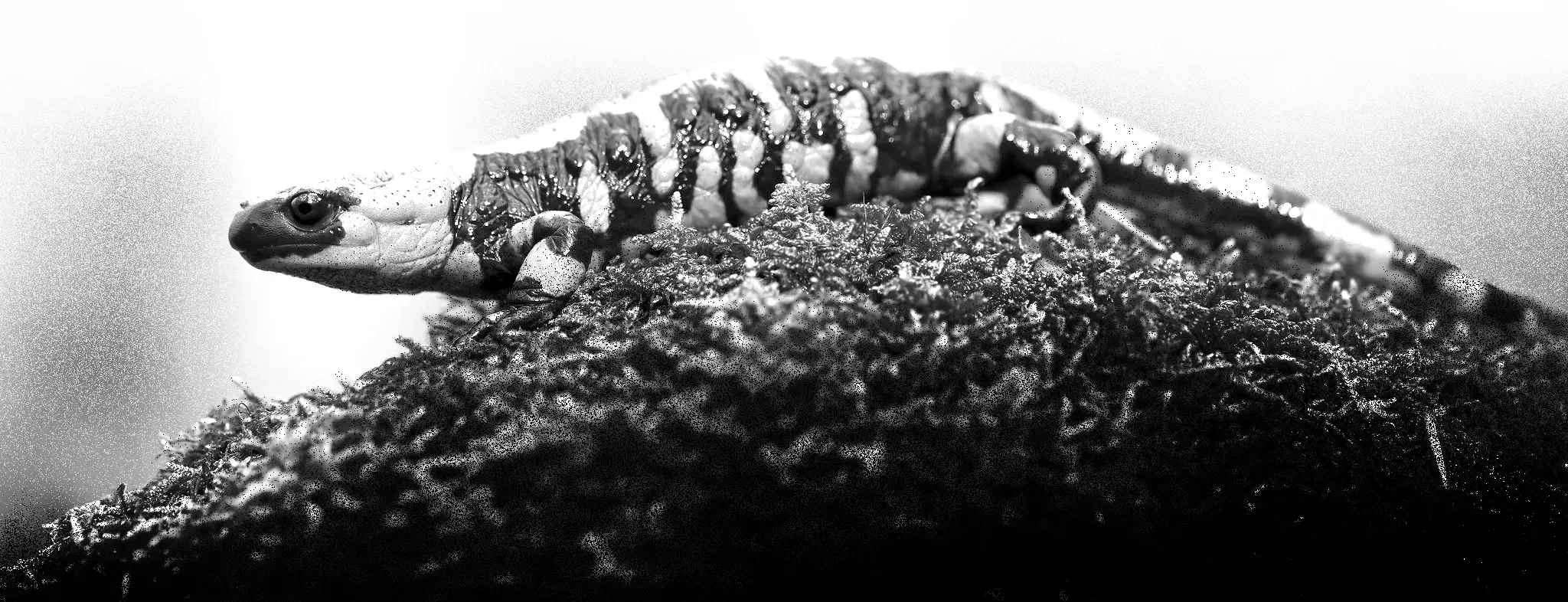
(Caeciliidae)
Common Caecilians
Справжні черв'яги
Caeciliidae is the family of common caecilians. They are found in Central and South America. Like other caecilians, they superficially resemble worms or snakes.
Although they are the most diverse of the caecilian families, the caeciliids do have a number of features in common that distinguish them from other caecilians. In particular, their skulls have relatively few bones, with those that are present being fused to form a solid ram to aid in burrowing through the soil. The mouth is recessed beneath the snout, and there is no tail.
Many caeciliids lay their eggs in moist soil. The eggs then hatch into aquatic larvae, which live in seepages in the soil, or in small streams. However, some species lack a larval stage, with the eggs hatching into juveniles with the same form as the adults, or else lack eggs and give birth to live young.
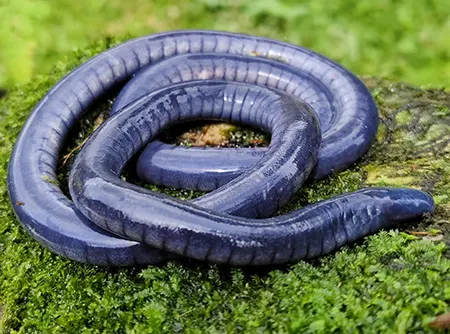
(Caecilia degenerata)
Garagoa Caecilian
Черв'яга колумбійська
It is endemic to Colombia and known from the Cordillera Oriental in Boyacá, Santander, and Cundinamarca Departments. Its natural habitats are montane forests.
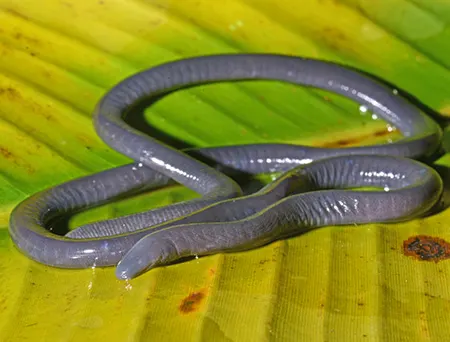
(Caecilia gracilis)
Surinam Caecilian
Черв'яга струнка
It is found in Brazil, French Guiana, Peru, Suriname, possibly Colombia, and possibly Guyana. Its natural habitats are subtropical or tropical moist lowland forests, moist savanna, plantations, rural gardens, and heavily degraded former forest.
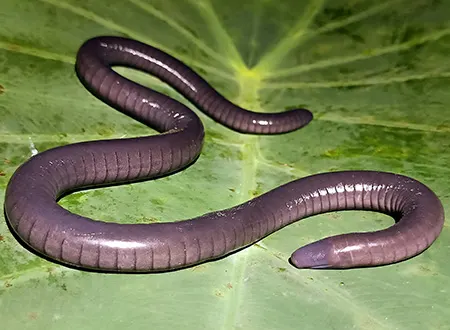
(Caecilia guntheri)
Günther's Caecilian
Черв'яга Ґюнтера
It is found in Colombia and Ecuador. Its natural habitat is subtropical or tropical moist montane forests, at elevations of 1,700–2,000 m.
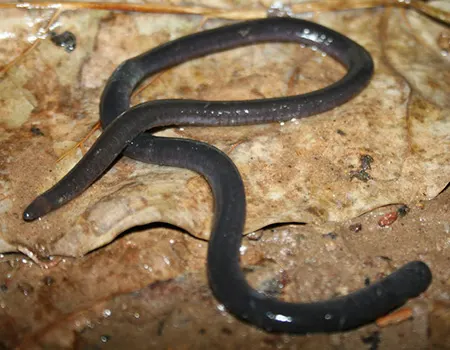
(Caecilia caribea)
Pensilvania Caecilian
Черв'яга карібська
It is endemic to Colombia. Its natural habitats are subtropical or tropical moist lowland forests, subtropical or tropical moist montane forests, plantations, rural gardens, and heavily degraded former forest.

(Caecilia atelolepis)
It is endemic to Colombia.
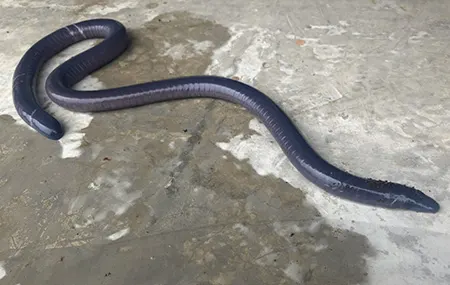
(Caecilia abitaguae)
Abitagua Caecilian
Черв'яга гігантська
It is endemic to Ecuador. Its natural habitats are subtropical or tropical moist montane forests, plantations, rural gardens, and heavily degraded former forest.

(Caecilia isthmica)
Isthmus Caecilian
Черв'яга перешийкова
It is found in Colombia and Panama. Its natural habitats are subtropical or tropical moist lowland forests, subtropical or tropical moist montane forests, plantations, rural gardens, and heavily degraded former forest.

(Caecilia leucocephala)
White-Headed Caecilian
Черв'яга струнка білоголова
It is found in Colombia, Ecuador, and Panama. Its natural habitats are subtropical or tropical moist lowland forests, plantations, rural gardens, and heavily degraded former forest.
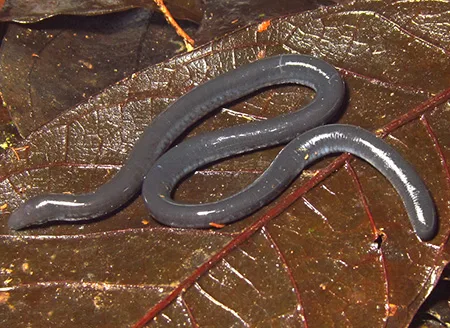
(Caecilia marcusi)
Villa Tunari Caecilian
It is found in the south-western Amazon Basin in Bolivia and Brazil; its range is likely to extend into Peru. It is a subterranean species inhabiting lowland tropical rainforest at elevations below 400 m.
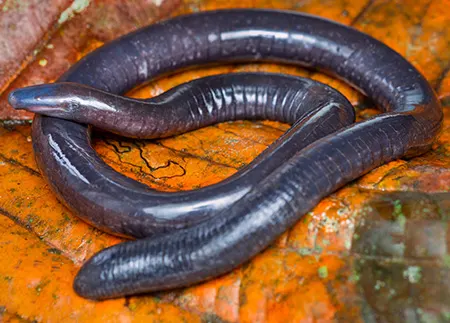
(Caecilia nigricans)
Rio Lita Caecilian
Черв'яга чорна
It is a subterranean species located in Colombia, Ecuador, and Panama. Its natural habitats include moist, subtropical or tropical lowland forests, plantations, rural gardens, and foothill forests.
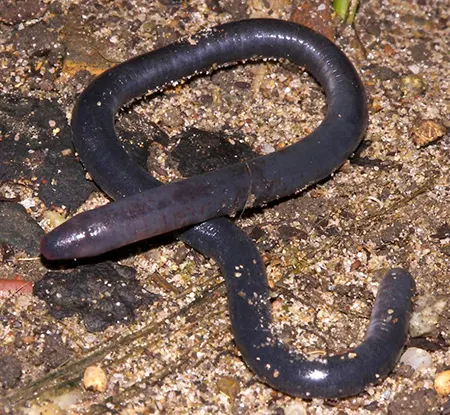
(Caecilia occidentalis)
Cauca Caecilian
Черв'яга довга
It is endemic to the Northwestern Andean montane forests within Colombia. Its habitat is subtropical or tropical moist montane forest, plantation, rural gardens, urban area, and degraded former forest, at elevations of 1,500–2,200 m.

(Caecilia orientalis)
La Bonita Caecilian
Черв'яга східна
It is found in Colombia and Ecuador. Its natural habitats are subtropical or tropical moist lowland forests, subtropical or tropical moist montane forests, rivers, freshwater marshes, intermittent freshwater marshes, pastureland, rural gardens, and heavily degraded former forest.
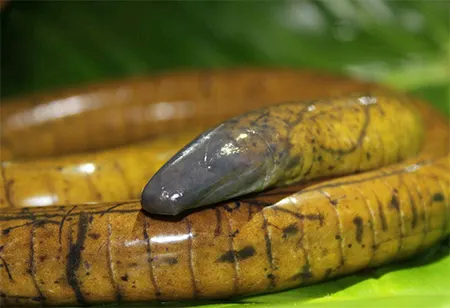
(Caecilia tesoro)
Tesoro's Caecilian
Черв'яга Тесоро
It is endemic to Ecuador, where it is found in the Chocó Tropical Humid Forest and the Western Piedmont Forest of the Ecuadorian Andes, in the provinces of Carchi, Esmeraldas, and Pichincha. It occurs at elevations of 300–1,420 m.

(Caecilia pachynema)
Intac Caecilian
It is found in Colombia and Ecuador. Its natural habitats are subtropical or tropical moist montane forests and rivers.
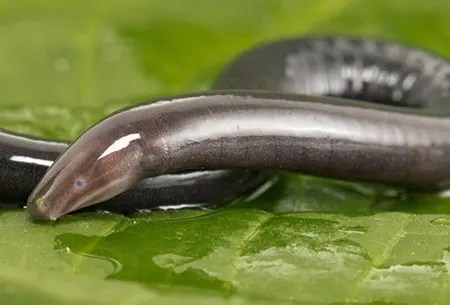
(Caecilia pulchraserrana)
It is found on the western slopes of the Eastern Ranges and is endemic to Yariguíes National Park, in Santander Department, Colombia. It inhabits marshy regions surrounded by secondary forests and with a large amount of heliconias present.
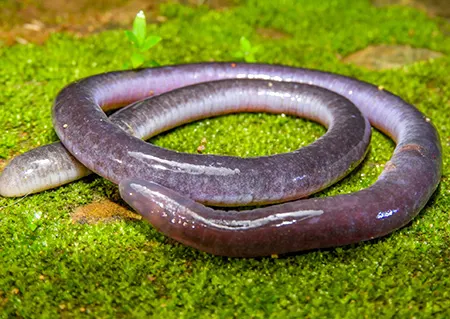
(Caecilia subnigricans)
Magdalena Valley Caecilian
Черв'яга магдаленська
It is found in Colombia and Venezuela. Its natural habitats are subtropical or tropical dry forests, subtropical or tropical moist lowland forests, plantations, rural gardens, and heavily degraded former forest.
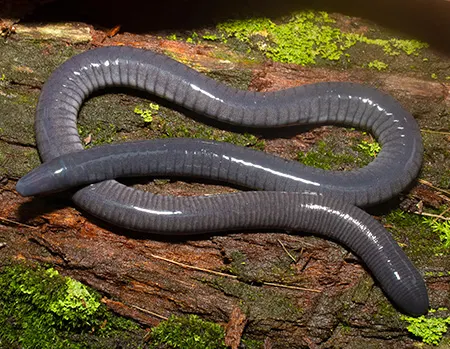
(Caecilia tentaculata)
Linnaeus' Caecilian
Черв'яга амазонська
It is found in Brazil, Colombia, Ecuador, French Guiana, Peru, Suriname, and Venezuela. It may be located in Bolivia and Guyana as well. It inhabits subtropical and tropical moist lowland forests, plantations, rural gardens, and deforested areas.
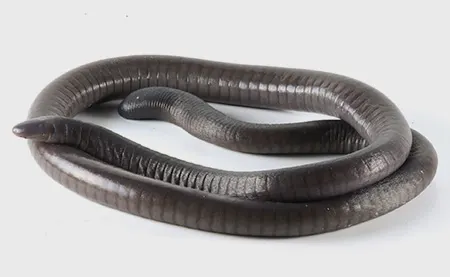
(Caecilia tenuissima)
Guayaquil Caecilian
Черв'яга гуаякільська
It is found in Colombia and Ecuador. Its natural habitats are subtropical or tropical moist lowland forests, plantations, rural gardens, and heavily degraded former forest.

(Caecilia thompsoni)
Thompson's Caecilian
Черв'яга Томсона
It is endemic to Colombia. Its natural habitats are subtropical or tropical moist lowland forest, subtropical or tropical moist montane forest, plantations, rural gardens, and heavily degraded former forest.
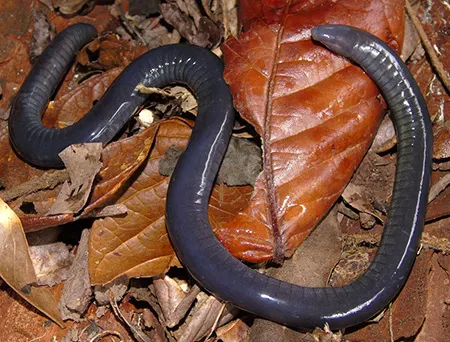
(Caecilia volcani)
Cocle Caecilian
It is endemic to Panama. Its natural habitats are subtropical or tropical moist lowland forests, subtropical or tropical moist montane forests, plantations, rural gardens, and heavily degraded former forest.
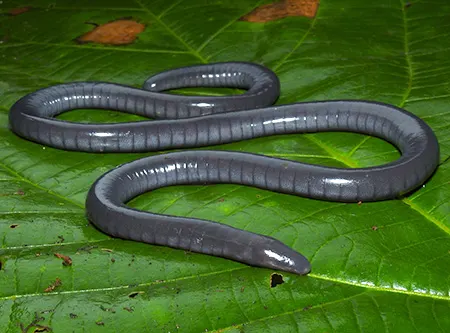
(Caecilia subdermalis)
Moscopan Caecilian
It is endemic to Colombia. Its natural habitats are subtropical or tropical moist montane forests, pastureland, plantations, rural gardens, and heavily degraded former forest.
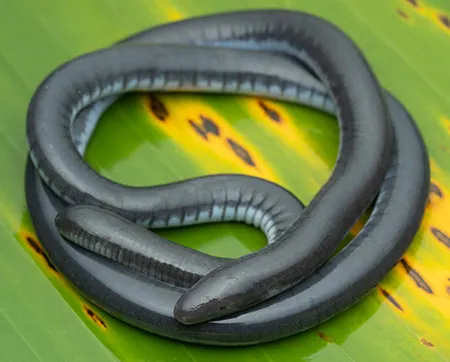
(Caecilia museugoeldi)
It is found in French Guiana.
(Caecilia)
It is a genus of amphibians.
Taylor’s Ecuador Caecilian (Caecilia subterminalis), Andagoya Caecilian (Caecilia perdita), (Caecilia yaigoje), (Caecilia wilkinsoni), Truncated Caecilian (Caecilia truncata), (Caecilia peltastes), (Caecilia marielae), (Caecilia macrodonta), Sinchona Caecilian (Caecilia inca). (Caecilia goweri), Yellow-spotted Caecilian (Caecilia flavopunctata), (Caecilia epicrionopsoides), Dunn’s Caecilian (Caecilia dunni), Rio Santiago Caecilian (Caecilia disossea), (Caecilia decipiens), Normandia Caecilian (Caecilia crassisquama), Solid Caecilian (Caecilia corpulenta), Bokermann’s Caecilian (Caecilia bokermanni), Santa Rosa Caecilian (Caecilia attenuata), Armored Caecilian (Caecilia armata), (Caecilia aprix), Antioquia Caecilian (Caecilia antioquiaensis), White-bellied Caecilian (Caecilia albiventris).
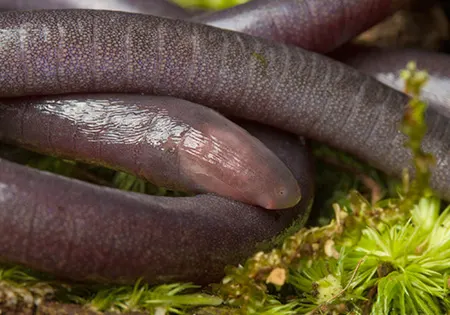
(Oscaecilia bassleri)
Pastaza River Caecilian
It is known from the lower Amazonian slopes and western Amazon Basin in Ecuador and Peru, but its range might extend into Bolivia and Colombia. It is a subterranean species occurring in primary tropical rainforest at elevations of 100–800 m.
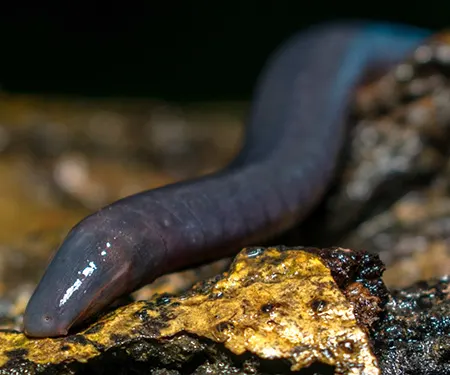
(Oscaecilia polyzona)
New Granada Caecilian
Черв'яга новогранадська
It is found in Colombia and possibly Panama. Its natural habitats are subtropical or tropical moist lowland forests, plantations, rural gardens and heavily degraded former forest.

(Oscaecilia osae)
Airstrip Caecilia
Черв'яга осакська
It is endemic to the Península de Osa in south-western Costa Rica. It is a subterranean species that occurs in lowland rainforest at elevations below 240 m.
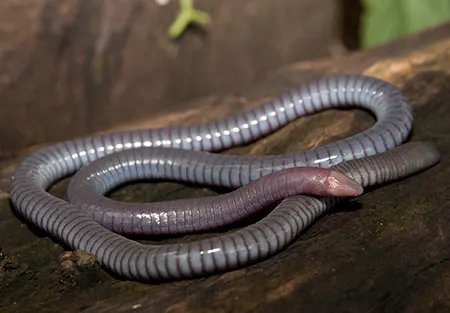
(Oscaecilia ochrocephala)
Yellow-headed Caecilian
Черв'яга жовтоголова
It is most commonly found in Panama and Colombia. Its natural habitats are subtropical or tropical moist lowland forests, plantations, rural gardens, and heavily degraded former forests.
The genus (Oscaecilia) also includes: Zweifel’s Caecilian (Oscaecilia zweifeli), Quisto Cocha Caecilian (Oscaecilia koepckeorum), Joinville Caecilian (Oscaecilia hypereumeces), Equatorial Caecilian (Oscaecilia equatorialis), Yavisa Caecilian (Oscaecilia elongata).
